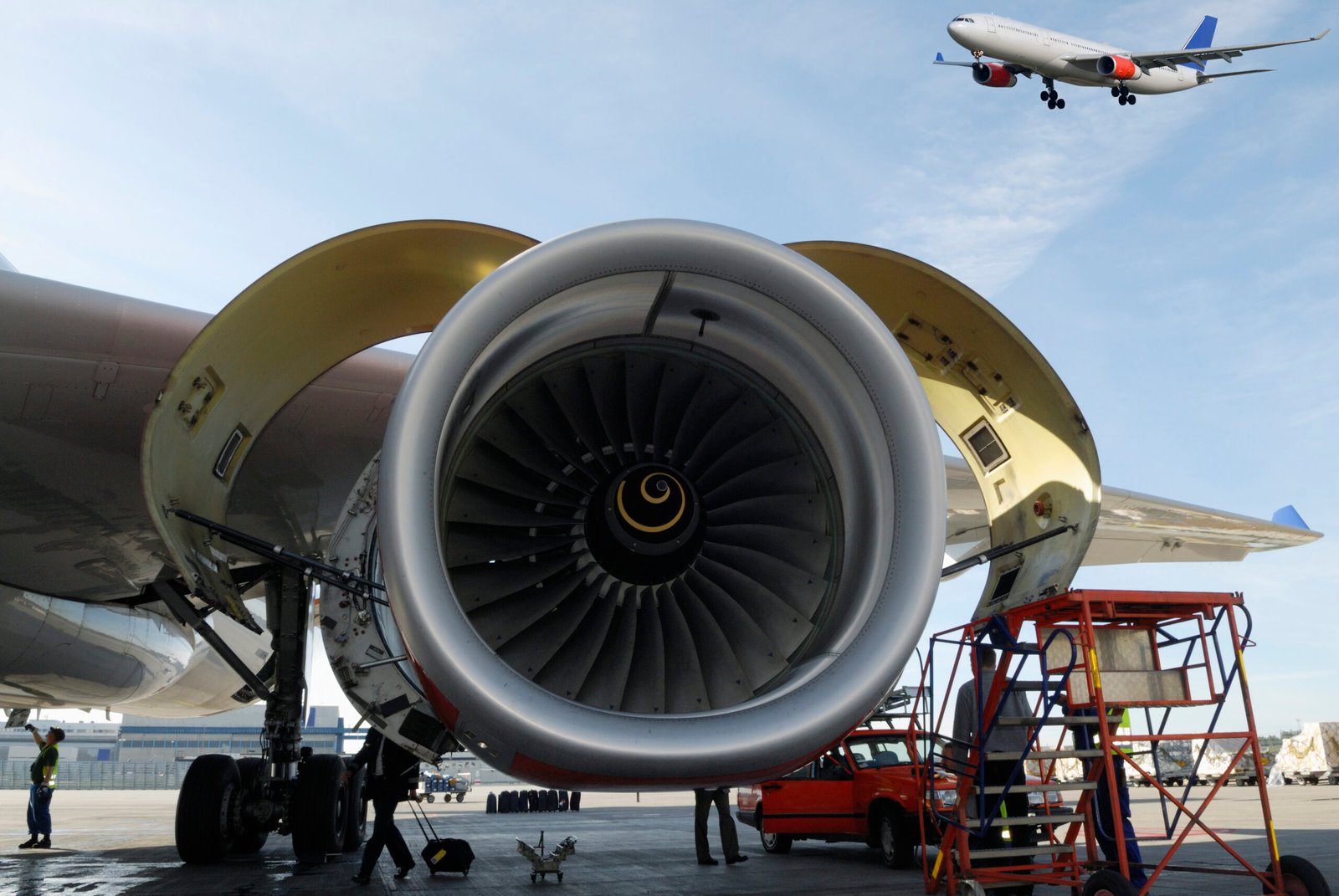Travel
Sky’s the Limit: Exploring the Most Unusual Airports Around the Globe
When we think about aviation, our minds often conjure images of sleek aircraft slicing through blue skies or bustling terminals filled with eager travelers. However, there’s a whole world beyond conventional airports that captivates the imagination—unusual airports that serve as gateways to adventure and curiosity. While exploring these intriguing hubs, let’s also take a moment to consider how aspiring aviators can prepare for their journeys in this fascinating field.
### Aviation Schools: Charting Your Course
Before you embark on your own airborne adventures, obtaining the right training is crucial. Aviation schools offer a variety of courses tailored to different interests and career goals. Whether you’re dreaming of piloting commercial airliners or managing airport operations, there’s something for everyone:

1. **Pilot Training Programs**: These courses teach aspiring pilots about navigation, meteorology, and flight regulations while providing hands-on flight experience.
2. **Air Traffic Control**: Focused on communication skills and situational awareness, these programs prepare students to manage air traffic effectively.
3. **Aviation Management**: For those interested in the business side of flying, these courses cover airport operations, airline management, and safety protocols.
4. **Aircraft Maintenance Technology**: This program is perfect for individuals who wish to delve into maintaining and repairing aircraft systems.
5. **Flight Dispatching**: Students learn how to plan flights meticulously while ensuring compliance with safety standards.
With such diverse offerings, aspiring aviators have numerous paths available to them!
### Navigating Online Resources
In today’s digital age, staying updated on aviation trends has never been easier. Numerous blogs, websites, and social media platforms cater specifically to aviation enthusiasts:
**Aviation Blogs**:
– *AirlineReporter*: A blog focused on airline reviews and industry news.
– *The Points Guy*: Ideal for frequent flyers looking for tips on maximizing travel rewards.
– *Flying Magazine*: Offers insights into pilot training along with gear reviews.
**Websites**:
– *FlightAware*: Provides real-time flight tracking data.
– *SkyVector*: A fantastic resource for pilots needing sectional charts.
– *AOPA (Aircraft Owners and Pilots Association)*: Great for general aviation news and resources.
**Social Media Sites**:
– Instagram accounts like @aviationdaily showcase stunning aircraft photos from around the globe.
– Twitter users such as @flightradar24 tweet live updates about airline happenings.
These platforms not only keep you informed but also connect you with fellow aviation enthusiasts!
### FAA Flight Schools & Simulators
If you’re ready to take your first steps toward becoming a pilot or enhancing your skills further, FAA-approved flight schools are where you want to be! They provide structured training programs aligned with federal standards. Many offer simulator experiences that allow students to practice flying without ever leaving the ground—a cost-effective way to gain valuable experience before taking off in an actual plane.
Simulators range from basic setups resembling small cockpits to advanced full-motion devices replicating commercial airliner environments. These tools are invaluable; they allow learners to navigate various scenarios safely—from routine operations to emergency situations—without risking lives or equipment.
### Conclusion
As we explore the most unusual airports worldwide—like those perched precariously on mountaintops or surrounded by stunning landscapes—we’re reminded that aviation is much more than just flying; it’s about community engagement and continuous learning. The sky truly is the limit! With quality education options available through various aviation schools and abundant online resources at your fingertips, embracing this exhilarating field has never been more accessible. So whether you’re planning your next trip from an extraordinary airport or gearing up for a career in aviation, remember—the adventure awaits!
Behind the Cockpit: A Day in the Life of an Airline Pilot
Ever wondered what it’s like to soar through the skies, commanding a massive airplane and ensuring hundreds of passengers arrive at their destinations safely? Being an airline pilot is not just a job; it’s a passion that requires extensive training, dedication, and skill. Let’s take you behind the scenes and explore what it takes to become a pilot, including aviation schools, useful resources, and the indispensable role of FAA-approved training programs.
*Aviation Schools: Navigating Your Path**
The journey to becoming an airline pilot often begins with formal education. Aviation schools offer various types of courses tailored for aspiring pilots. Generally, these can be categorized into:
1. **Degree Programs:** Many universities provide bachelor’s degrees in aviation science or aeronautical engineering. These programs encompass flight training along with essential coursework in subjects like meteorology and navigation.
2. **Certificate Programs:** For those looking for a quicker route into the cockpit, certificate programs focus specifically on the required flight hours and practical skills needed for obtaining private or commercial pilot licenses.
3. **Accelerated Flight Schools:** Ideal for individuals eager to fast-track their careers, these schools offer intensive flight training designed to equip students with everything they need within months.
4. **Online Courses:** Some institutions have begun offering online modules covering theoretical aspects of aviation—perfect for those balancing work or other commitments alongside their studies.
Choosing the right path depends on personal goals and timelines but rest assured that each type offers vital insights into aviation fundamentals.
*Resources You Can Rely On**
In today’s digital age, staying informed is crucial. Fortunately, numerous blogs and websites cater to both novice enthusiasts and seasoned professionals alike:
**AirlinePilotCentral.com**: A comprehensive resource that provides information about airlines’ hiring trends along with forums where pilots share experiences.
**Flying Magazine**: This publication delivers articles about flying techniques, safety tips, and reviews on new aircraft—all invaluable for any aspiring aviator.
**Piper Aviators Blog**: Dedicated to sharing tales from fellow pilots along with tips on maintaining planes—an excellent read for hands-on learners.
Social media platforms also serve as vibrant communities where pilots connect:
Follow hashtags like #PilotLife or #AviationDaily on Instagram to catch stunning aerial shots while learning from industry veterans.
Join Facebook groups such as “Aviation Enthusiasts” or “Future Pilots” where members share advice and opportunities related to flight training.
*FAA Flight Schools & Simulators**
The Federal Aviation Administration (FAA) plays a pivotal role in regulating flight training standards in America. FAA-approved flight schools are essential for anyone serious about becoming an airline pilot—they adhere strictly to safety regulations while providing high-quality instruction.
These schools often boast advanced simulators that replicate real flying conditions without leaving the ground! These state-of-the-art devices allow trainees to practice maneuvers they might encounter during actual flights—perfecting everything from emergency procedures to navigation techniques without putting anyone at risk.
As your day unfolds behind the cockpit—from pre-flight checks through cruising altitude—you’ll realize that every moment spent learning contributes toward achieving your dream of commanding an aircraft. Embrace this exciting journey filled with challenges but equally rewarding milestones; after all, adventure awaits just beyond the horizon!

Flight Path to Freedom: Exploring the Rise of Budget Airlines
In an era where travel is more accessible than ever, budget airlines have revolutionized the way we think about flying. The democratization of air travel has unlocked a world of opportunities for adventurous spirits and business travelers alike. As this industry continues to grow, understanding the foundations that support it—like aviation education—is essential.
*Aviation Schools: Navigating Your Options**
The journey into aviation can take many forms, depending on your career aspirations. Various types of courses are offered at aviation schools, each catering to different interests and goals. For those eager to become pilots, Private Pilot License (PPL) programs are fundamental stepping stones. They introduce students to the basics of flying while teaching them about navigation and flight regulations.
For aspiring professionals in aircraft maintenance, Airframe and Powerplant (A&P) programs focus on the technical aspects needed to keep planes in top condition. For individuals interested in air traffic control or management roles within airports, specialized courses in aviation management and operations provide a comprehensive overview of how the industry functions behind the scenes.
Additionally, many institutions now offer online courses and certifications that allow students to learn at their own pace while still gaining valuable knowledge applicable to today’s dynamic aviation environment.
*A Web of Knowledge: Aviation Blogs & Websites**
Finding reliable information about aviation is crucial for both enthusiasts and professionals. Luckily, a plethora of blogs and websites cater to these needs:
1. **Airliners.net** – A community-driven platform where users share photos and experiences related to commercial aviation.
2. **Flying Magazine** – This publication covers everything from pilot tips to aircraft reviews.
3. **Flight Global** – Offers in-depth analysis on industry trends along with breaking news.
4. **AvGeekery.com** – A fun site for those who love all things aviation; it offers stories that range from travel tips to airline history.
5. **The Points Guy** – A must-read for anyone looking to maximize travel rewards through smart flying.
Social media also plays a vital role in connecting aviators worldwide:
On Twitter, accounts like @FlyWithMeSky share real-time updates on budget airlines’ routes.
Instagram features stunning aerial shots through hashtags like #aviationlovers or #budgettravel that inspire wanderlust.
Facebook groups such as “Airline Pilots” bring together professionals who exchange insights and advice.
*Learning Through Simulation: FAA Flight Schools**
When it comes to gaining hands-on experience without leaving the ground, FAA-approved flight schools utilizing simulators have become increasingly popular. These advanced facilities replicate real-world flying conditions meticulously—offering budding pilots an opportunity to practice maneuvers safely before taking off into the skies.
Many flight schools offer comprehensive training using state-of-the-art simulators that accurately depict various aircraft types and environmental conditions—ranging from clear blue skies to stormy weather scenarios.
By integrating simulators into their curriculum, these schools help reduce costs associated with traditional flight training while also enhancing safety standards by providing an environment where students can make mistakes without dire consequences.
In conclusion, as budget airlines continue their ascent toward making air travel more democratic than ever before, educational resources surrounding aviation are flourishing alongside this growth. By exploring diverse course offerings at various schools or tapping into online communities dedicated to sharing knowledge around this exciting field, you can find your unique flight path toward freedom in the skies!

Navigating the Skies: How Aviation Technology is Transforming Travel
Aviation has always captured our imaginations, but the rapid evolution of technology is propelling this industry into an exciting new era. From the way we train pilots to how we plan our journeys, innovations are reshaping every facet of air travel. In this post, we’ll explore various types of aviation schools, valuable online resources, and the role of FAA-certified flight schools and simulators in modern training.
### Types of Aviation Courses
Aspiring aviators have a plethora of options when it comes to education. The types of courses offered by aviation schools can vary significantly based on individual career goals:
1. **Pilot Training Programs**: Most commonly sought after, these programs range from private pilot licenses to commercial and airline transport pilot certifications. They equip students with essential flying skills alongside safety protocols.
2. **Aviation Management**: For those who prefer not to be in the cockpit, aviation management courses focus on airport operations, logistics planning, and regulatory compliance. Graduates often find roles in administration or operations within airlines or airport authorities.
3. **Air Traffic Control**: Aspiring air traffic controllers must attend specialized training programs that cover communication protocols, navigation systems, and radar operation techniques—ensuring that they can effectively manage the flow of air traffic safely.
4. **Aircraft Maintenance Technology**: These programs emphasize hands-on training in aircraft mechanics and maintenance procedures. Students learn about aerodynamics as well as electrical systems to ensure aircraft are safe for operation.
5. **Flight Simulation Training**: With advancements in simulation technology, many schools now offer dedicated courses focusing on utilizing state-of-the-art flight simulators for practical training without leaving the ground.
### Online Resources for Aviation Enthusiasts
In addition to traditional education programs, numerous online platforms provide insights into the aviation world:
**Airliners.net**: A treasure trove for aviation photography enthusiasts; this site features stunning images along with discussions on everything from specific aircraft models to airline experiences.
**Flying Magazine**: This publication keeps readers updated on industry trends while offering tips and advice tailored specifically for pilots at all levels.
**Pilot’s Digest Blog**: A fantastic resource filled with articles about personal experiences from pilots around the globe as well as technical insights into flying various aircraft.
**Reddit’s r/flying subreddit**: A vibrant community where both seasoned aviators and novices share their stories and seek advice.
Social media also plays a pivotal role in connecting aviation lovers worldwide:
Instagram accounts like @aviationnation showcase breathtaking aerial shots while fostering a robust community.
Twitter users such as @AvGeekCentral share real-time updates about flights, airlines news, and events happening within the industry.
### FAA Flight Schools & Simulators
The Federal Aviation Administration (FAA) sets high standards for flight training across America. FAA-approved flight schools offer structured environments where students can earn their licenses under rigorous guidelines ensuring safety and efficacy.
Many institutions incorporate advanced simulators into their curriculum—these tools mimic actual flying conditions without ever leaving the ground! By using cutting-edge technology like virtual reality (VR), aspiring pilots can experience everything from turbulent weather conditions to emergency scenarios in a risk-free environment.
In conclusion, technological advancements are revolutionizing how we approach aviation education and travel itself. Whether you’re considering enrolling in a pilot program or simply looking for reliable online resources to fuel your passion for flying, there’s never been a better time to take advantage of what’s available today! So strap in—because navigating these skies has never been more exciting!
Flight Paths: Explore the Most Breathtaking Airports Around the World
When it comes to aviation, there’s more than just soaring through the skies and landing safely; it’s about the journey that begins long before takeoff. Aspiring pilots and aviation enthusiasts often find themselves navigating a maze of educational options, online resources, and flight schools. This post will guide you through diverse aviation schools, essential online platforms, and insights into FAA-approved flight training.
*Aviation Schools by Types of Courses**
The world of aviation education is rich and varied, catering to different interests and career aspirations. Here’s a brief overview of common course types:
1. **Pilot Training Programs**: These are designed for those who dream of taking control of an aircraft. From private pilot licenses (PPL) to commercial pilot licenses (CPL), these programs cover everything from basic navigation skills to advanced aerodynamics.

2. **Aircraft Maintenance Engineering**: For those inclined towards the technical side, this program focuses on maintaining and repairing aircraft systems. Understanding mechanical engineering principles ensures that planes remain safe for travel.
3. **Aviation Management**: This course is ideal for individuals looking to dive into airport operations or airline management. It covers operational procedures, regulatory requirements, and business strategies in the aviation sector.
4. **Air Traffic Control Training**: A vital component of airspace safety, air traffic control training teaches students how to manage aircraft movements efficiently while ensuring safety protocols are followed.
5. **Flight Dispatch Programs**: This field involves planning flight routes, fuel loads, and weather considerations. Dispatchers play a crucial role in ensuring smooth operations behind the scenes.
Each type offers unique insights into different facets of aviation, allowing students to tailor their education according to their passions.
*Lists of Aviation Blogs, Websites, Social Media Sites**
In today’s digital age, staying updated with aviation trends is easier than ever with numerous blogs and websites dedicated to this field:
**Airliners.net**: A go-to site for plane spotters featuring thousands of photos from around the globe.
**Flying Magazine Blog**: Offers articles on flying techniques as well as product reviews.
**Jetwhine.com**: A blog focusing on industry developments along with thought-provoking commentary.
**Aviation Week Network**: Provides news articles focused on aerospace technology advancements.
Social media also plays a pivotal role in connecting aviators worldwide:
Follow hashtags like #AvGeek on Twitter or Instagram for stunning aerial imagery shared by fellow enthusiasts.
Facebook groups such as “Pilots’ Lounge” or “General Aviation” foster community discussions ranging from flying tips to industry news.
*FAA Flight Schools / Airplane Schools / Simulators**
Choosing an FAA-approved flight school is paramount for receiving quality training recognized across the United States—and beyond! Look for institutions that offer both ground school instruction alongside practical flight experiences using advanced simulators.
Simulators provide an invaluable tool for budding pilots—they allow trainees to practice maneuvers without leaving the ground while experiencing real-life scenarios in a controlled environment. Notable FAA-certified institutions include:
**Embry-Riddle Aeronautical University**
**Purdue University**
**California State University – Los Angeles**
These schools not only equip students with hands-on experience but also connect them with industry professionals through internships and networking events.
In conclusion, whether your heart races at the thought of piloting an aircraft or managing daily airport operations from afar, there’s no shortage of avenues within aviation waiting to be explored. Embrace your passion by diving deep into education resources—your flight path awaits!




